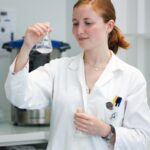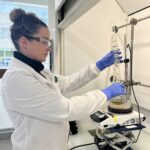Accueil
L'unité en quelques chiffres clés :
|
Créé en 2022 |
79 membres |
5 équipes de recherche |
281 publications (2015-2024) |
45 soutenances de thèse (2015-2024) |
Les équipes :
Publications récentes :
(±)‐Catechins inhibit prehaustorium formation in the parasitic weed <scp><i>Phelipanche ramosa</i></scp> and reduce tomato infestation Article de journal
Dans: Pest Management Science, 2025, ISSN: 1526-4998.
Comprehensive protocol for preparing diatom cell samples and associated bacterial consortia for scanning electron microscopy Rapport technique
no. 103380, 2024.
CIRCUS: CIRCUlating tumour cells in soft tissue Sarcoma - a short report Article de journal
Dans: Cancer Drug Resist, 2024, ISSN: 2578-532X.
Complete genome sequence of a marine Pseudoalteromonas bacterial strain En ligne
Journals, ASM (Ed.): 2024.
Transcriptional landscape of the interaction of human Mesenchymal Stem Cells with Glioblastoma in bioprinted co-cultures Article de journal
Dans: Stem Cell Res Ther, vol. 15, no. 1, 2024, ISSN: 1757-6512.













